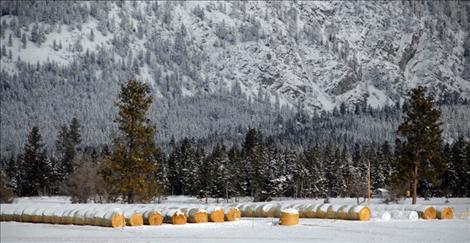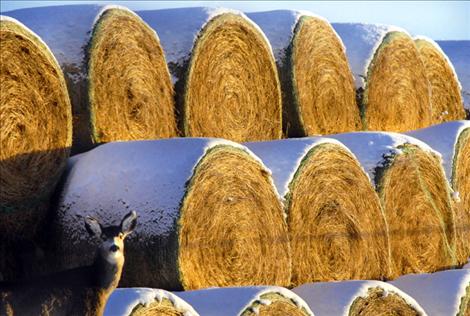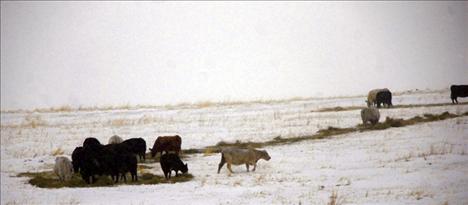Despite national drought, hay supply plentiful in Mission Valley
Hey savvy news reader! Thanks for choosing local.
You are now reading
1 of 3 free articles.
As the old ranch saying goes, “hay is like money in the bank.” If a rancher has hay, he can feed his or her own horses, cows and other animals all winter. Hay can always be sold to help out a neighbor or bring in some cash.
Cold weather and snow make it tougher for cows to scrounge enough of last year’s grass, and most stockmen supplement with hay.
By now, most people have started feeding hay to their cows. But at Christmas time, there were still some ranchers running their cows on grass, “which is rare for this country,” according to Ken McAlpin, president of the Western Montana Stockmen’s Association.
With a drought around the United States, hay is expensive, although the Mission Valley had more moisture than most last summer and consequently had more hay.
“That’s the blessing part of Western Montana,” McAlpin said. “We can usually count on moisture or irrigation and get a hay crop.”
Hay is running anywhere from $100 to $200 a ton, depending on the quality, McAlpin said.
“The small square bales for the weekend horse people are at a premium,” he added.
It’s getting harder to find hay for sale, McAlpin said. He noticed an advertisement in an agricultural paper for $200-a-ton hay in Malta, which is spendy for cowmen.
According to a rancher in the Big Horn Basin in northern Wyoming, hay there brings $200 a ton, “if you can find it.”
McAlpin figures on 30 pounds of hay per day for the two and three year old heifers and cows, plus a pound of cake each. For their older cows, McAlpin and wife Gina feed 30 to 32 pounds per day.
Montana State University Extension Agent Jack Stivers said a cow need two pounds of protein per day so a combination of grass hay and supplements or a mixture of grass hay with some alfalfa fits the bill.
Stivers agreed with McAlpin that there’s a strong hay market, stimulated by colder weather
“There’s always a demand for quality hay,” he explained.
Calving and lambing seasons are coming soon with colts later on in the spring, and those mama cows, ewes and mares need nutrition.
All animals convert food to heat to keep themselves warm.


















